The Brackenridge Field Lab hosts research projects from a broad range of disciplines on its 82 acres. Read on to learn about some of the research being done at our field station.
Sedio Lab: Chemical Ecology of Plants and their Natural Enemies
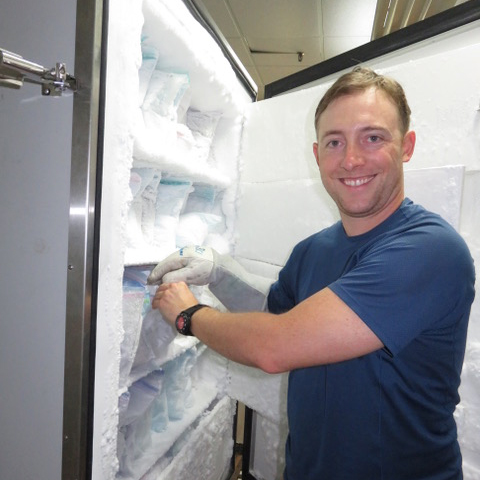 |
The world’s forests vary in species richness by two orders of magnitude at the local scale (ca. 25 hectares). Foundational hypotheses in ecology and evolution propose a central role for plant interactions with insect herbivores and microbial pathogens in maintaining species-rich plant communities and selecting for new plant defenses, and in geographical variation in these processes. Researchers in the Sedio Lab apply cutting-edge techniques in metabolomics to test predictions of these fundamental hypotheses regarding the role that plant secondary metabolites play in limiting the host ranges of herbivores and pathogens, essentially defining chemical ‘niches’ that may stabilize competitive coexistence in communities and drive evolutionary lineage diversification in plants. Ongoing research in the Sedio Lab takes place in a network of forest plots maintained by the Smithsonian Tropical Research Institute in Panama, as well as the Smithsonian Institution Forest Global Earth Observatory world-wide network of forest dynamics plots. Research at the Brackenridge Field Lab seeks to compare the ecology and evolution of plant chemical defenses in local temperate-subtropical plants such as passionflowers (Passiflora), oaks (Quercus), and hollies (Ilex) with plant communities that differ climatically and biogeographically.
Myrmecoclepsy
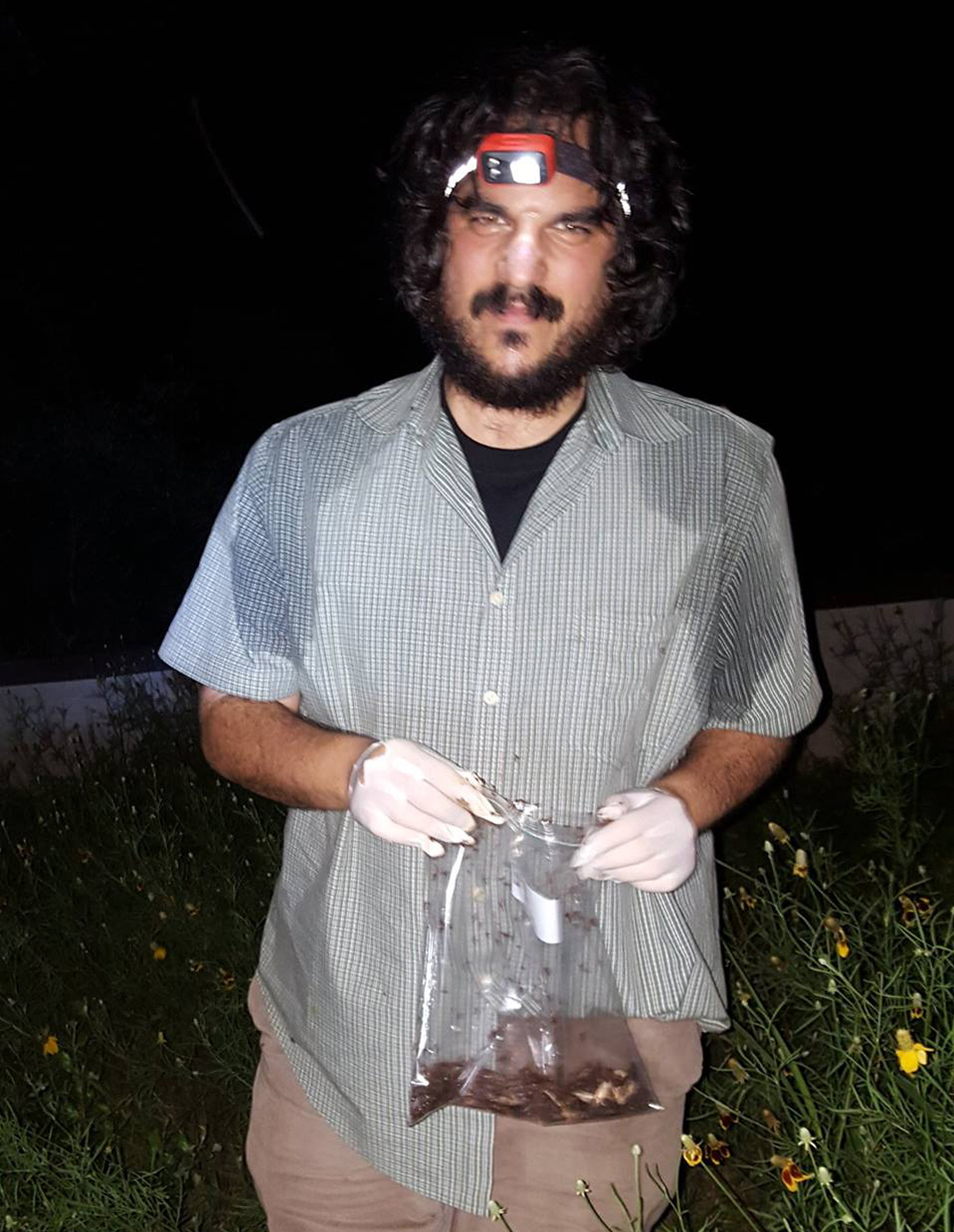 |
Zach Phillips studies organisms that live with leaf-cutter ants, like the “Atta” cockroach, Attaphila fungicola. These roaches are myrmecophiles (“ant loving” organisms), and are specifically dependent on leaf-cutter ant colonies for their survival and reproduction. The roaches will hitch rides on the backs of winged virgin female ants on their nuptial flights. This has led to the assumption that after flights the roaches remain with queens beginning new colonies.
However, early in his PhD work, Zach observed that new leaf-cutter queens (termed “foundresses”) and roaches don’t get along in the lab, which led him to test other possible modes of roach “between-colony transmission.”
You can learn more about the leaf cutter ant and the "Atta" roach in an article about Zach's work here.
Aquatic agroecology
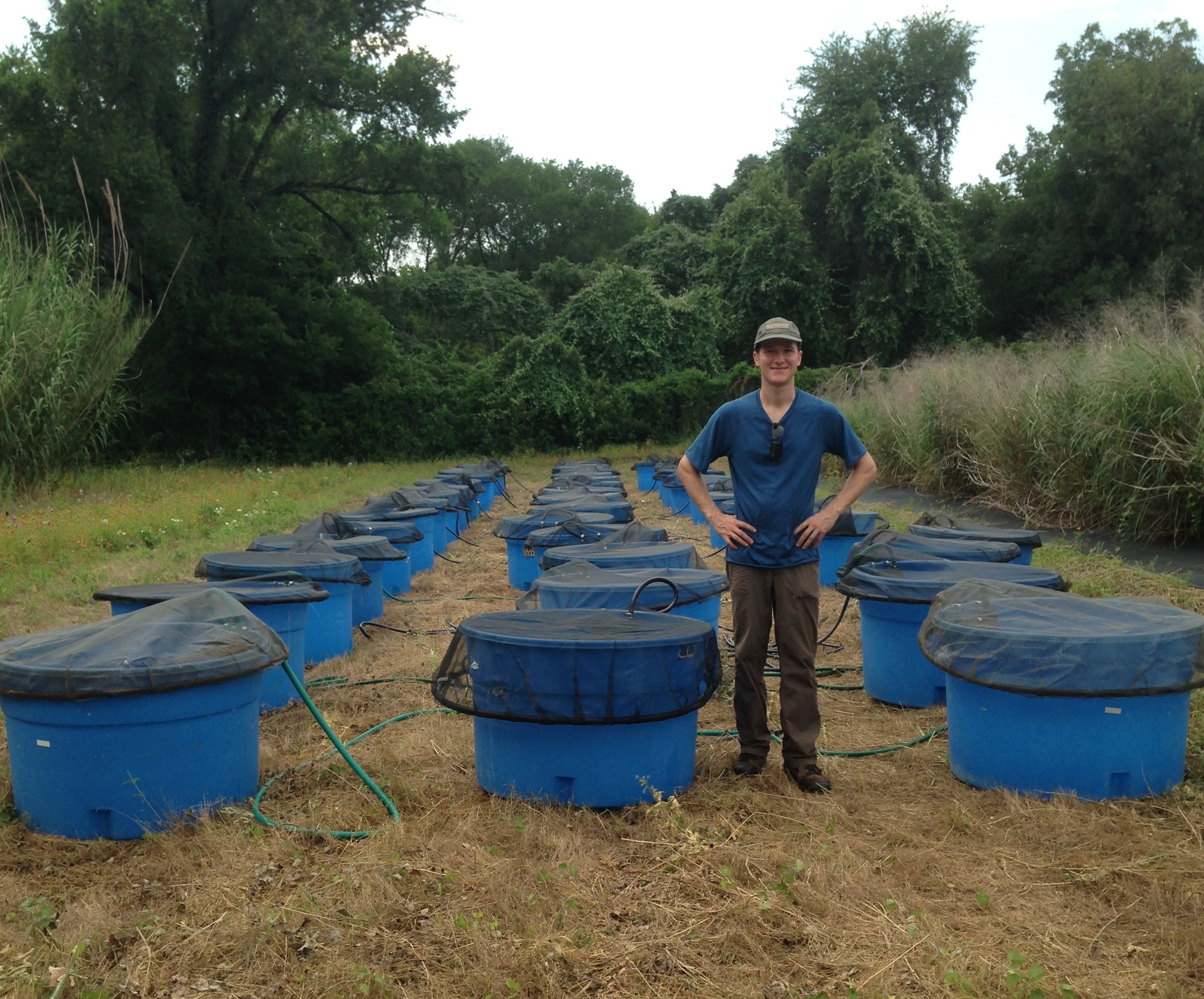 Chase Rakowski is interested in combining basic ecological questions -- like how, and under what conditions, biodiversity stabilizes ecosystems -- with applied questions related to finding more sustainable and economical ways to grow algae. Microscopic algae are grown for a variety of uses, from nutrient supplements to fertilizer to biofuels. However, algae crops are often unreliable and may crash with no warning when unwanted microbes or pests colonize the pond. Finding ways to mitigate these problems could open the door for more sustainable algae products to enter the market.
Chase Rakowski is interested in combining basic ecological questions -- like how, and under what conditions, biodiversity stabilizes ecosystems -- with applied questions related to finding more sustainable and economical ways to grow algae. Microscopic algae are grown for a variety of uses, from nutrient supplements to fertilizer to biofuels. However, algae crops are often unreliable and may crash with no warning when unwanted microbes or pests colonize the pond. Finding ways to mitigate these problems could open the door for more sustainable algae products to enter the market.
The field of agroecology applies ecological principles to find ways to improve crop yields naturally, without the use of chemicals. For example, agroecological research has led to effective biological control methods (release of predators to control pests). However, little agroecological research has been done in aquatic systems, which are often much more variable and prone to larger impacts from herbivores.
Chase is currently testing the effectiveness of backswimmers (aquatic true bugs) as biocontrol agents to control zooplankton "pests." He is also asking whether using multiple species of these bugs will increase and stabilize the yield of algae. Thus he aims to find a way to improve algae yields naturally, while shedding light on the role of predator diversity in stabilizing ecosystems.
Ryan Lab: Animal Behavior
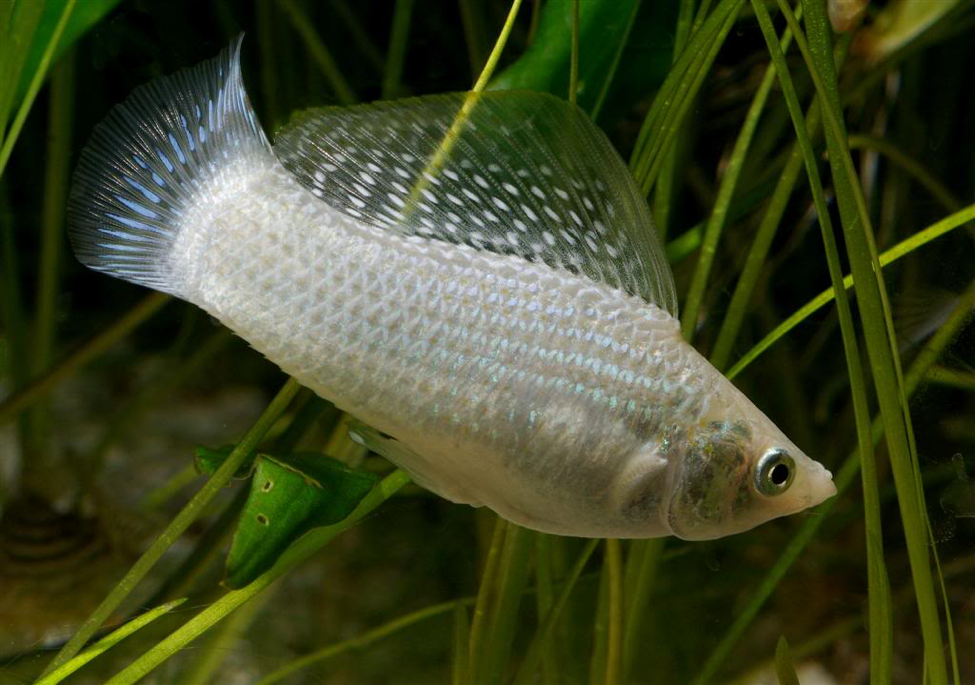
Research in the Ryan laboratory addresses questions concerning the evolution and function of animal behavior. Most of the questions we have addressed are centered on issues of sexual selection and communication and have attempted to integrate studies of brain, behavior, and evolution. Although much of the research in the lab focuses on frogs and bats, a substantial portion also utilizes fishes. This research is centered at the Brackenridge Field Laboratory, where we have studied two groups of fishes, swordtails and mollies.
Factors Influencing Phenotypic and Genotypic Polymorphism in Male Body Size in the Swordtails (Xiphophorus: Poeciliidae: Pisces): In swordtails variation at the P allele influences most of the variation in body size in most species. A variety of studies are addressing behavioral correlates of the P allele, the maintenance of its variation in nature, and the historical patterns of preferences in females and P alleles in males in the clade of northern swordtails.
We recently identified the P gene as the melanocortin 4 receptor gene, and showed that: (i) there is copy number variation in mc4r, (ii) Y-linked alleles result in non-functional receptors, and (iii) there is a correlation between male size and copy number of Y-linked alleles. Current studies with Professor Manfred Schartl (Wurzburg Univ, Germany), Dr. Hans Hoffman (University of Texas), and Dr. Alex Jordan (Max Planck Institute) are exploring the molecular genetics, neurobiology and behavioral evolution of this system.
Behavioral Factors in the Maintenance of an Asexual-Sexual Species Complex of Mollies: The Amazon molly, Poecilia formosa, is an all-female species that reproduces clonally, but females must mate with males of the sexual species, P. latipinna, to acquire sperm necessary to trigger embryogenesis. The main question of our research asks, why would male sailfins mate with female Amazons if there is no reproductive benefit to the male? A related question asks what are the phenotypic differences between Amazon itself and mollies that relate to standing genetic variation in each species?
Alex Wild: Arthropod Diversity & Evolution
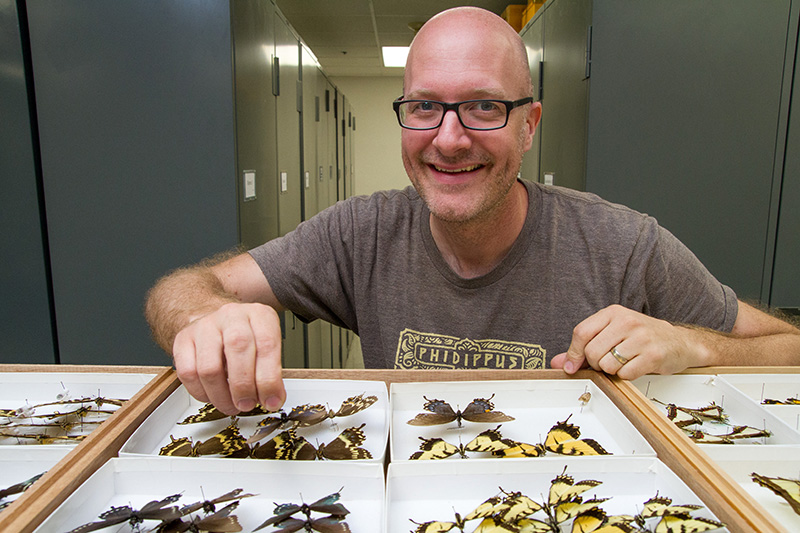
Alex is the curator of UT’s arthropod collection housed at Brackenridge Field Lab, comprising about 2 million specimens from Texas and around the world. The UT collection is used as a basis for research on what species are, where they occur, and how their distributions shift in response to changes in landscapes and climate. The collection serves as anarchive of past studies at UT, but also activelyhosts students learning about ecology, evolution, biological diversity, scientific imaging, and collections management. Alex’s own research concerns the evolution and classification of ants, particularly in the Americas.
Jha Lab (Shalene Jha, Kim Ballare, Sarah Cusser): Understanding Drivers of Bee Community composition and Nesting Success in an Urban Matrix
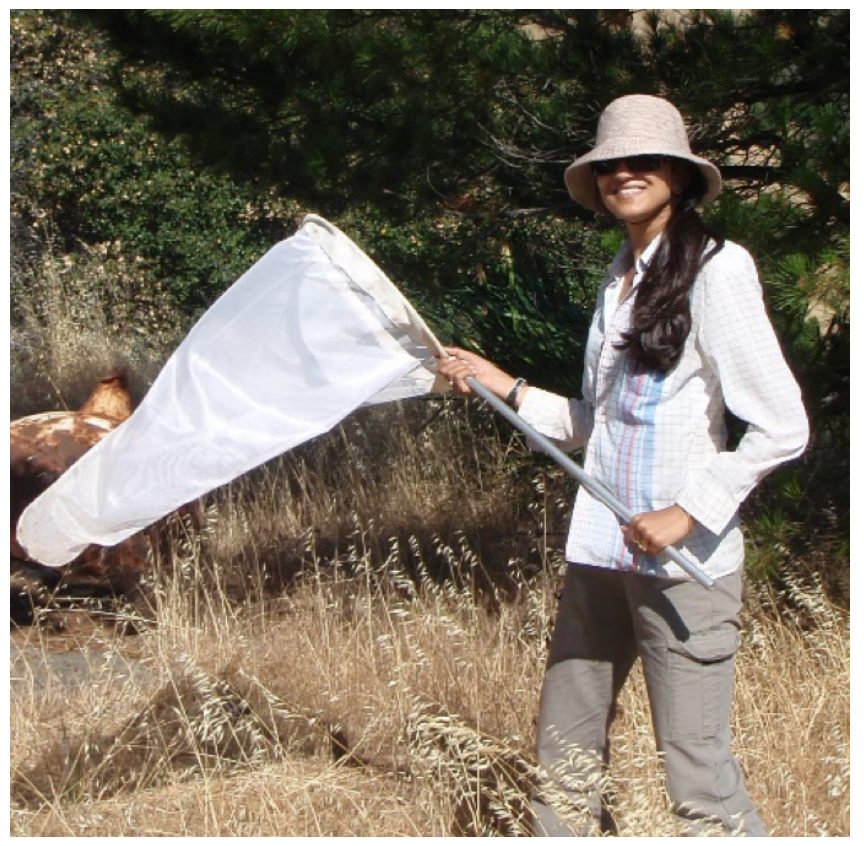
More than 80% of wild and cultivated plant species are benefited by animal-mediated pollination, and there are economic as well as ecological reasons for better understanding how to manage landscapes for abundant and species rich pollinator communities. One aspect of the lab’s research examines how local and regional land management practices impact the composition of native pollinator communities. At Brackenridge Field Lab and a number of other of urban habit fragments in Texas, we are examining bee community composition and turnover in response to local floral and nesting resources as well as regional land cover. We are also using light microscopy-based pollen analyses and network modeling to examining how wild pollinators interact with native and exotic plants across habitat types and phenological periods.
The Juenger Lab: Ecological and Evolutionary Genetics of Local Adaptation in Plants
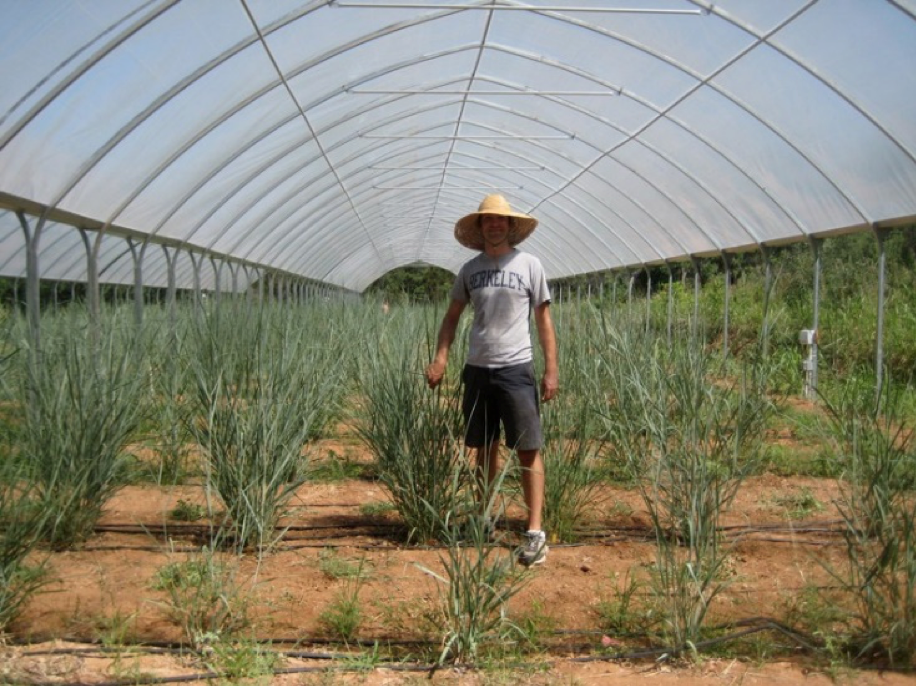 A central problem in evolution is the dynamic role that genetic architecture plays in adaptive evolution. On the one hand, abundant genetic variability is a prerequisite for evolution. However, the nature of the variability can strongly determine the rate, direction, and ultimately the adaptive optimum reached by populations. In extreme cases, the structure of genetic variability can constrain responses and lead to maladaptation. Much of our understanding of adaptive evolution has come from theoretical models and few empirical studies have linked genetic details from natural populations to adaptive trait evolution. As such, the importance of genetic architecture on evolutionary change is largely unknown. Research in the Juenger lab has focused on empirical studies of two key components of genetic architecture, pleiotropy and gene-by-environment interaction (GEI), using modern genomic tools. Much of our research has focused on the model plant, Arabidopsis thaliana. More recently we have expanded our research to include studies of several C4 perennial grasses including switchgrass (Panicum virgatum) and Hall’s panicgrass (Panicum hallii).
A central problem in evolution is the dynamic role that genetic architecture plays in adaptive evolution. On the one hand, abundant genetic variability is a prerequisite for evolution. However, the nature of the variability can strongly determine the rate, direction, and ultimately the adaptive optimum reached by populations. In extreme cases, the structure of genetic variability can constrain responses and lead to maladaptation. Much of our understanding of adaptive evolution has come from theoretical models and few empirical studies have linked genetic details from natural populations to adaptive trait evolution. As such, the importance of genetic architecture on evolutionary change is largely unknown. Research in the Juenger lab has focused on empirical studies of two key components of genetic architecture, pleiotropy and gene-by-environment interaction (GEI), using modern genomic tools. Much of our research has focused on the model plant, Arabidopsis thaliana. More recently we have expanded our research to include studies of several C4 perennial grasses including switchgrass (Panicum virgatum) and Hall’s panicgrass (Panicum hallii).
Our studies of C4 perennial grasses use a combination of whole-plant physiological assays, ecological, genetic, and genomic approaches. Our main effort has been to better understand plant responses to drought using rainout shelters, field trials spanning diverse habitats and geographical range, and detailed abiotic stress studies of responses to soil drying. These studies have been based in the experimental garden and greenhouses of Brackenridge Field Lab, with replications across other sites. Our most recent project centers on evaluating the genetic basis of divergences between upland and lowland ecotypes of switchgrass using QTL and GWAS mapping approaches and field trials spanning the latitudinal range of the species.
Undergraduate Research on Pollinators at BFL
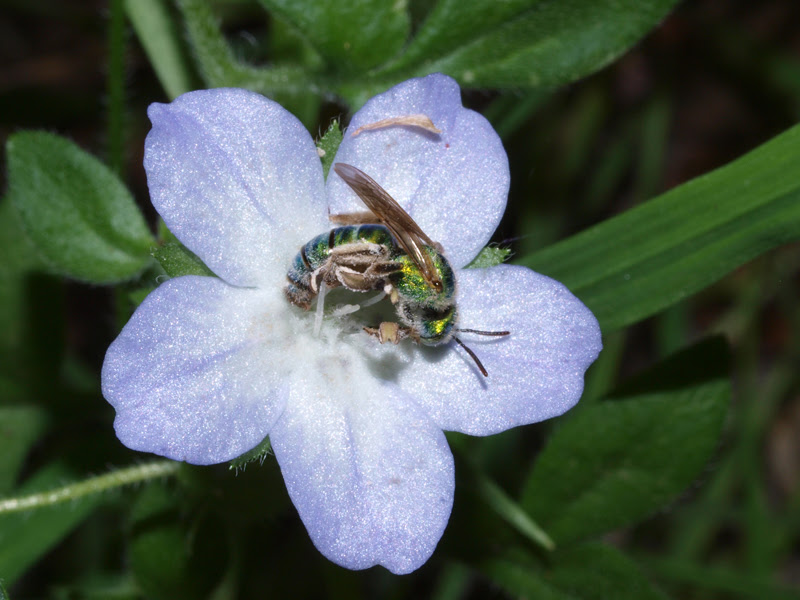 current crisis for agriculture and conservation is the decline of pollinator species, particularly bees. Both the domestic honey bee and diverse wild bee species are undergoing population crashes, which are largely unexplained. The consequences are immense, worth many billions of dollars per year in agricultural production and affecting the persistence of many native plant species that depend on these insects for their reproduction.
current crisis for agriculture and conservation is the decline of pollinator species, particularly bees. Both the domestic honey bee and diverse wild bee species are undergoing population crashes, which are largely unexplained. The consequences are immense, worth many billions of dollars per year in agricultural production and affecting the persistence of many native plant species that depend on these insects for their reproduction.
Research programs of IB professors Nancy Moran and Shalene Jha address the factors affecting bee populations, and both make use of the BFL for their work. Both Moran and Jha have extensive involvement of UT undergraduate students in their research programs. Moran studies the microorganisms that are exchanged among bee populations, and how these interact with the insect immune system and other stressors affecting bee populations. In January 2015, she launched a new Freshman Research Initiative stream, with support from the National Science Foundation as well as the UT FRI funding. The BFL is essential for the success of this FRI research stream. Students make use of the natural habitats in collecting samples, which they examine using molecular and microbiological methods in the adjacent lab space. They also depend on the entomology collection, to aid in species identification. The close proximity of field sites, laboratory space, and collections is thus critical for this course. These undergraduates represent a growing cohort of students who are keenly interested in environmental science and biodiversity. They recognize the importance of these areas for humanity’s future and are strongly motivated to become involved in research on biodiversity and ecological issues. This stream is a key opportunity for them to experience research relevant to their interests.



